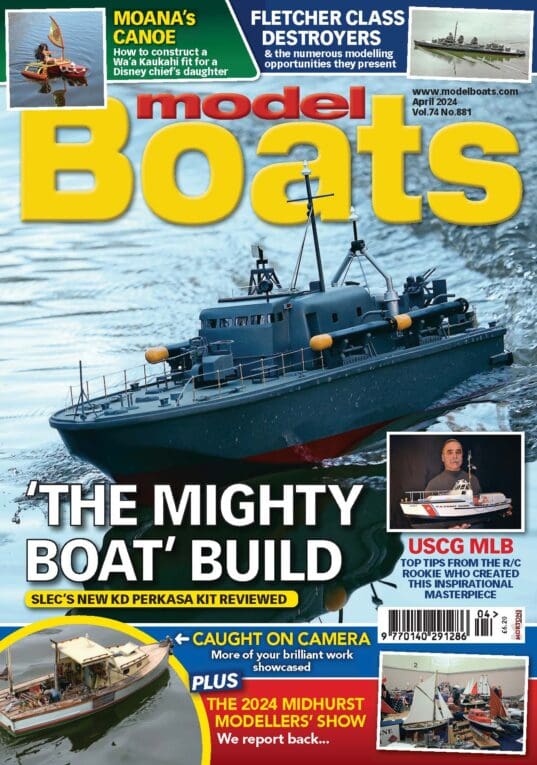A background piece about the author and his model boat plans
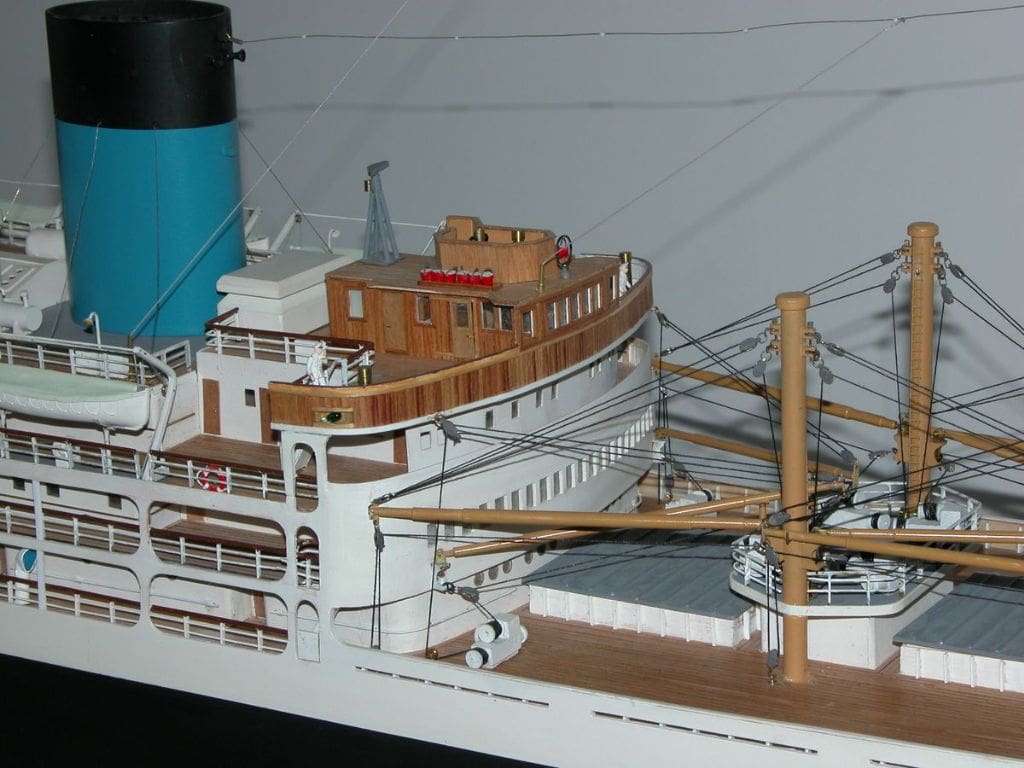
Alfred Holt’s Blue Funnel cargo liner Helenus.
Jim – the man
Enjoy more Model Boats Magazine reading in the monthly magazine.
Click here to subscribe & save.
James, known also as Jim, was born into a family of fishermen in a fishing village in Shetland. It was perhaps natural therefore that this environment would direct his interest to boats, ships and all things maritime. A change of scene occurred in the form of a marine engineering apprenticeship with a well known shipbuilding and engineering company at Greenock. This was followed by sea service as a marine engineer officer in the merchant navy and on coming ashore, he followed a career path through drawing offices in the same shipbuilding company and then to senior positions in marine manufacturing in a company closely associated with the former throughout their history and which were supplying components to shipyards across the globe. This involved a lot of travel in the UK, Europe, Scandinavia, South Africa and the Far East.
The general uncertainty and impending run down of the shipbuilding and marine engineering industry in the UK saw a timely move as a manager to an American owned company in the offshore oil industry in the mid-1970s. Foreign travel again beckoned, as well as visits to USA and it included spells living in Norway and Holland.
On return back to the UK he rejoined his immediate former employers, but this time in the North East of England. Being a long established company trading in a wide range of businesses worldwide, they had set up an offshore service company initially to service the North Sea market and Jim continued with them until his retirement.
Always having been keen on drawing, sketching and painting, his initial interest in drawing ship and boat plans began when at school. He drew the shapes of the frames for a canoe that he was building, then hand sawed the thin laths from two inch thick planks and covered the hull with material obtained from a local baker. This was originally used for flour bags, watertightness being achieved by liberally coating it inside and out with paint.
He has amassed over the years a somewhat embarrassingly large collection of books, drawings, photos, marine and technical journals plus various other reference materials, all of which have allowed him to prepare model plans of many types of vessels large and small.
Given the superlative skills of many model makers and the availability of advanced tools and materials, this perhaps in turn has led to ever greater detail being included on his plans. Whilst inevitably a few errors may have occurred over the forty odd years or so, thankfully to date any criticisms voiced have been very minor and at 74 years of age Jim is still drawing.
Working on plans gives him much pleasure and hopefully the same to model makers, particularly when some of the finished articles appear at exhibitions and in the pages of this magazine.
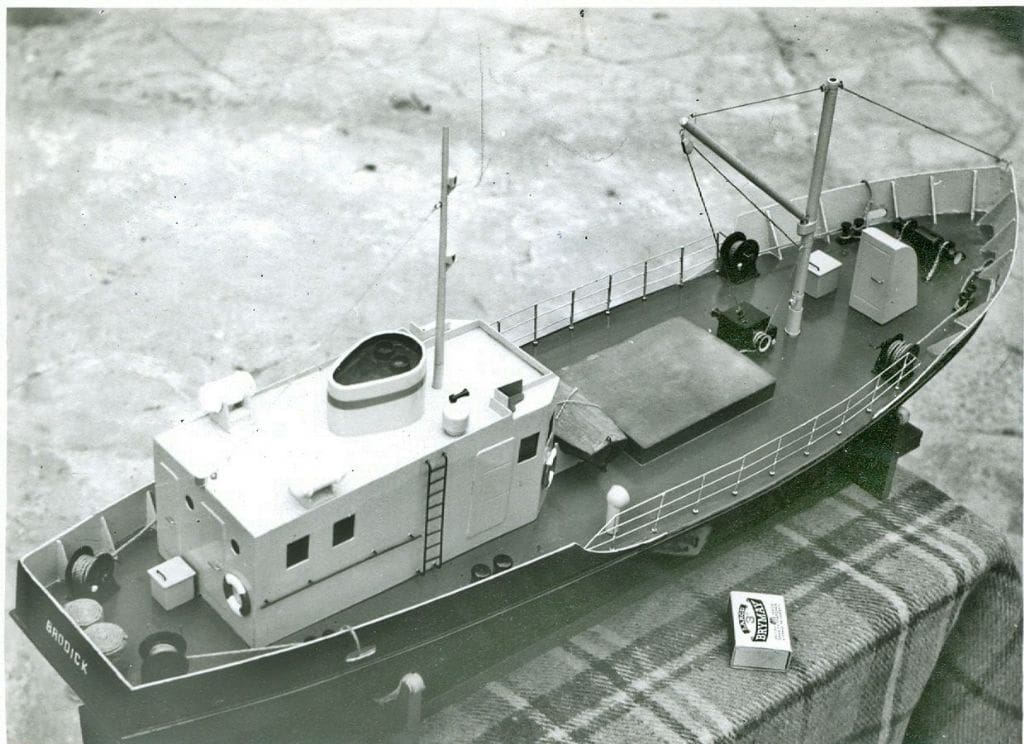
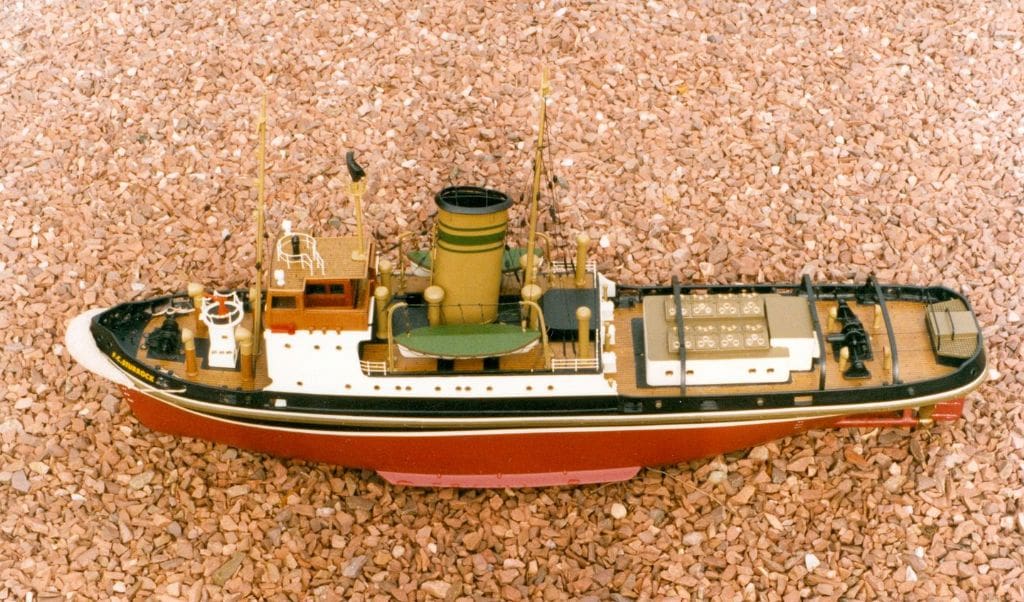
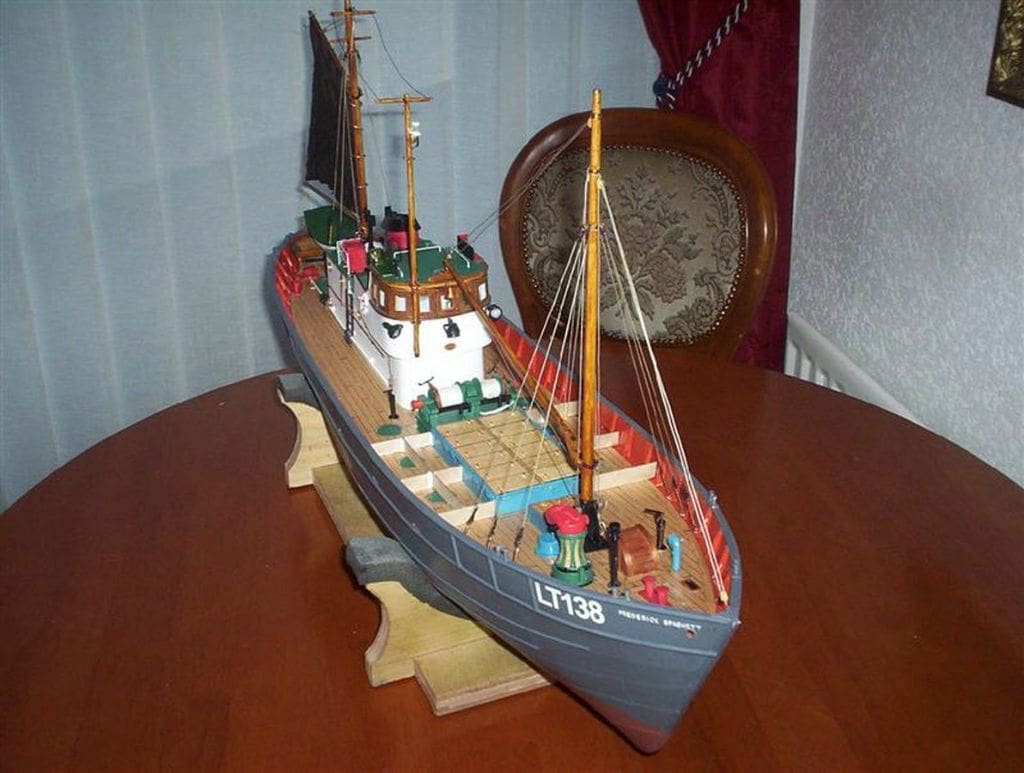
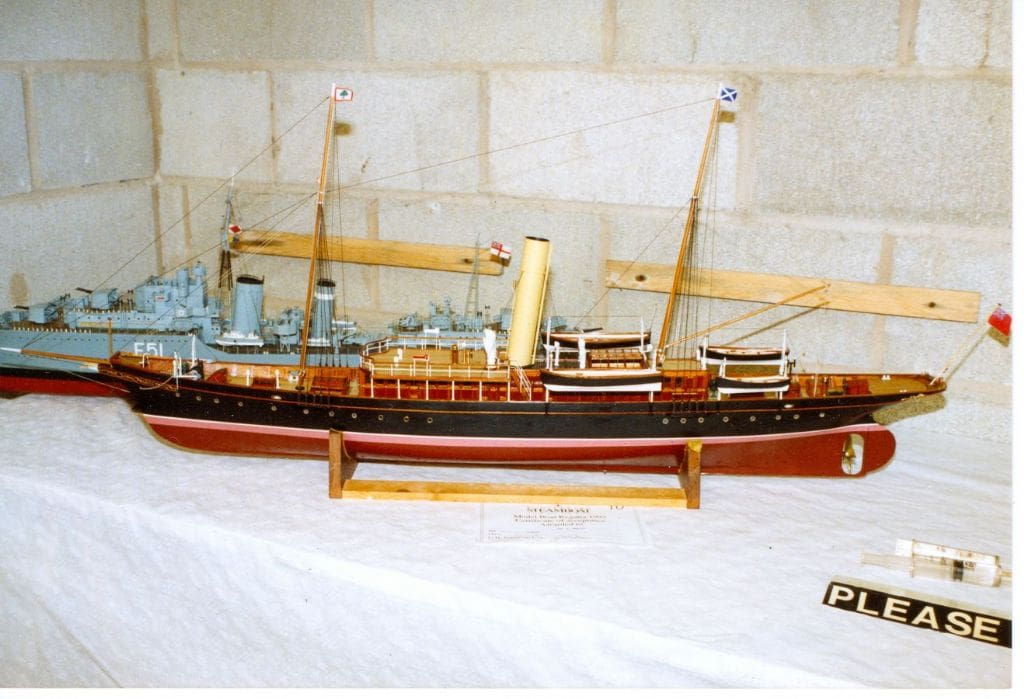
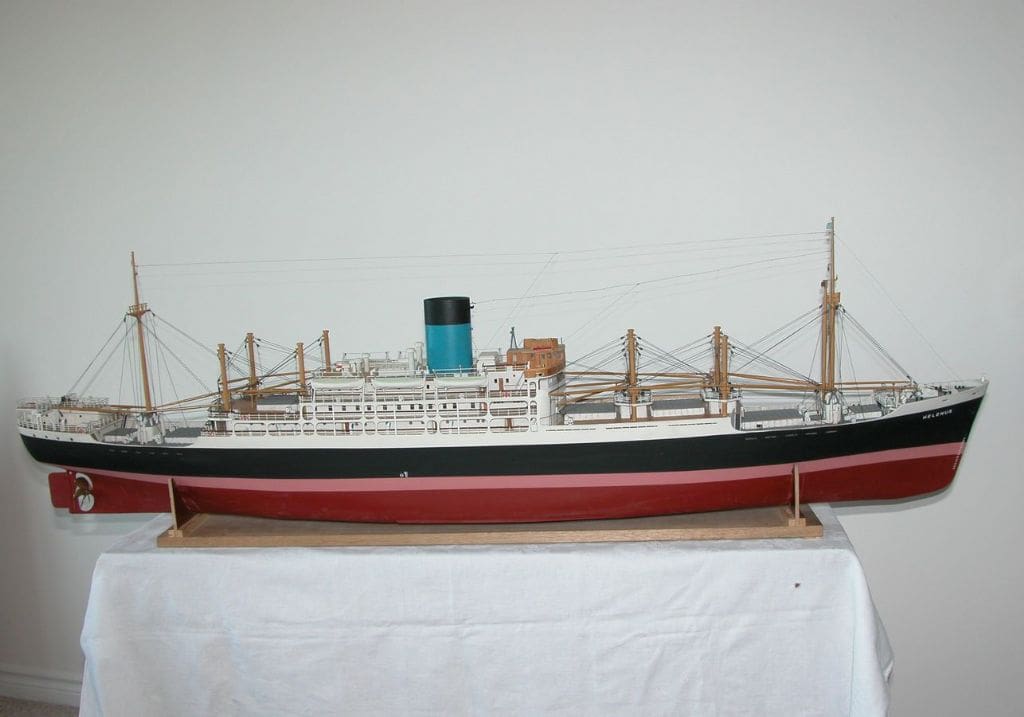
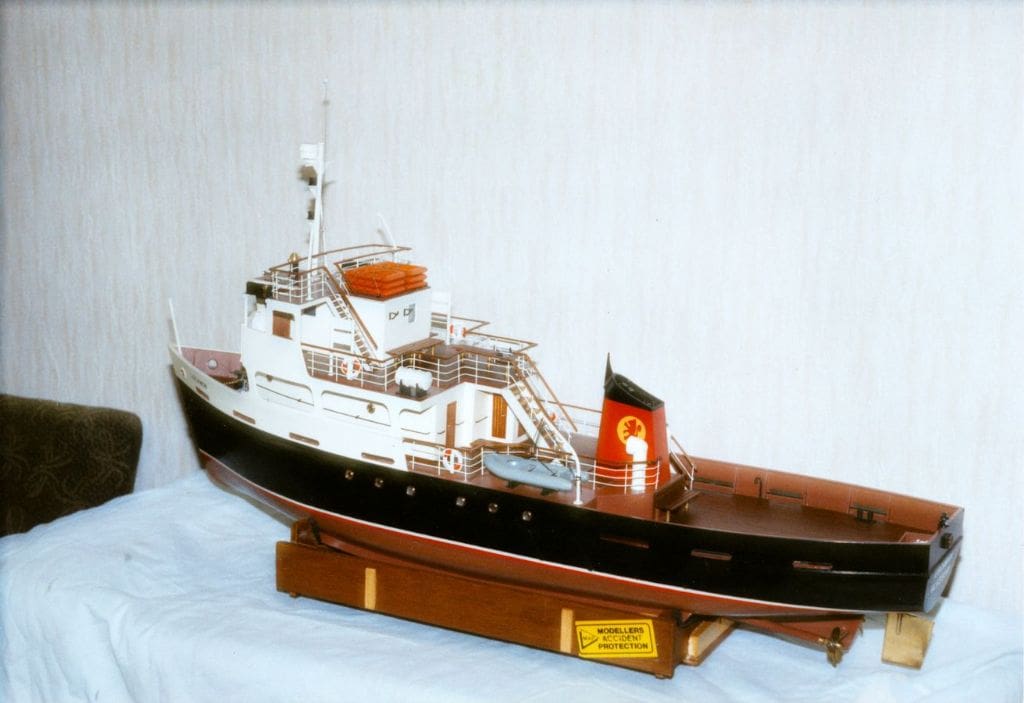
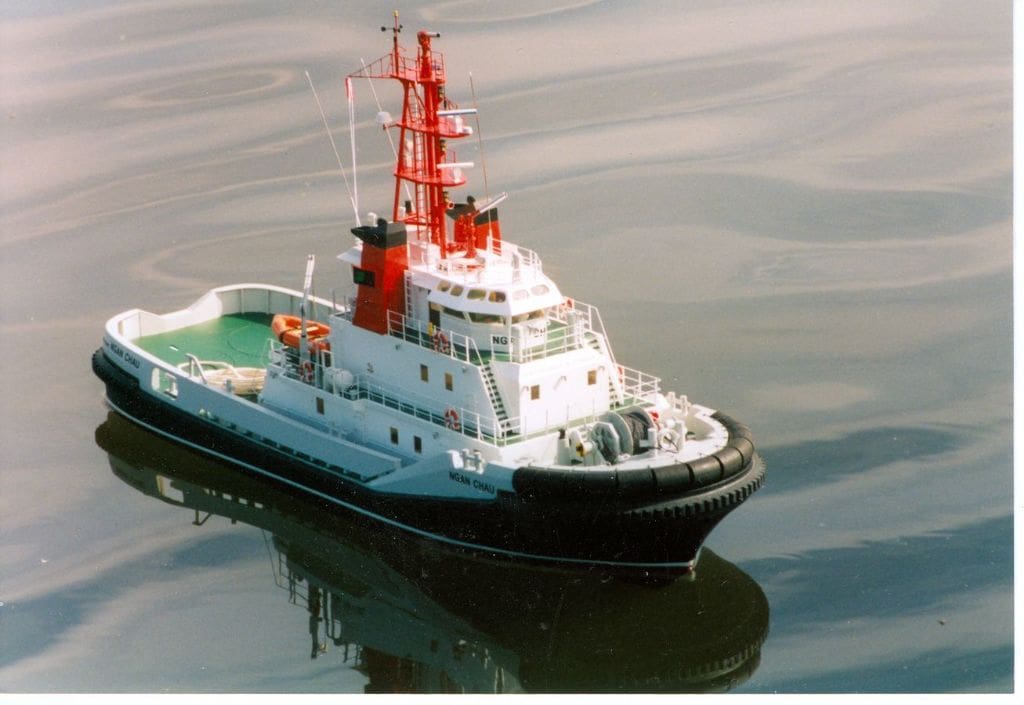
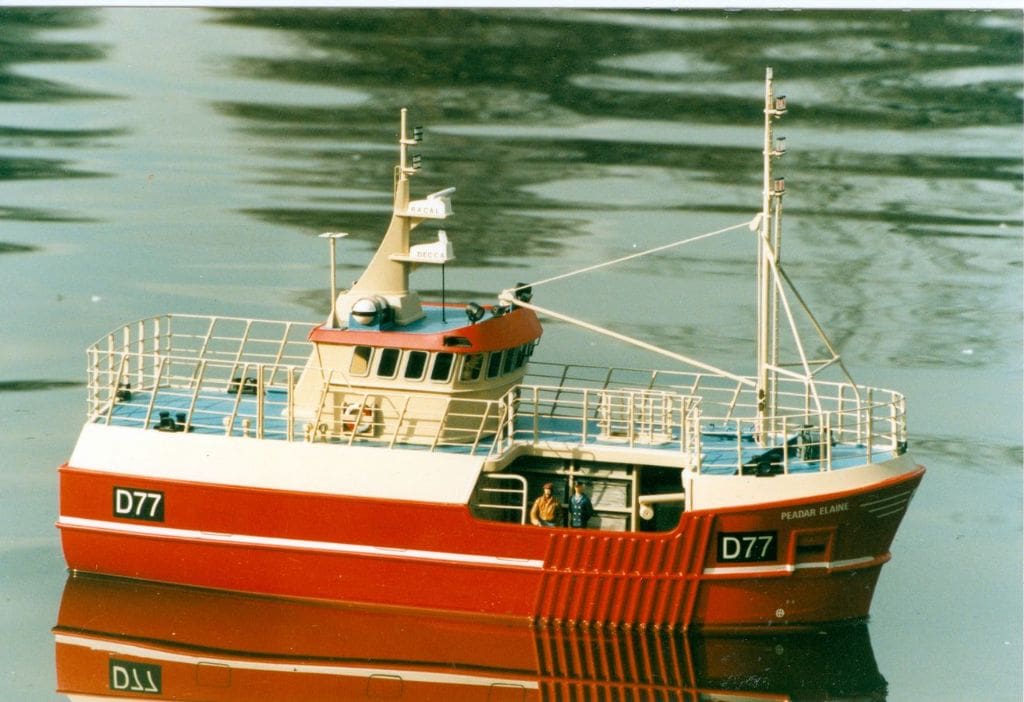
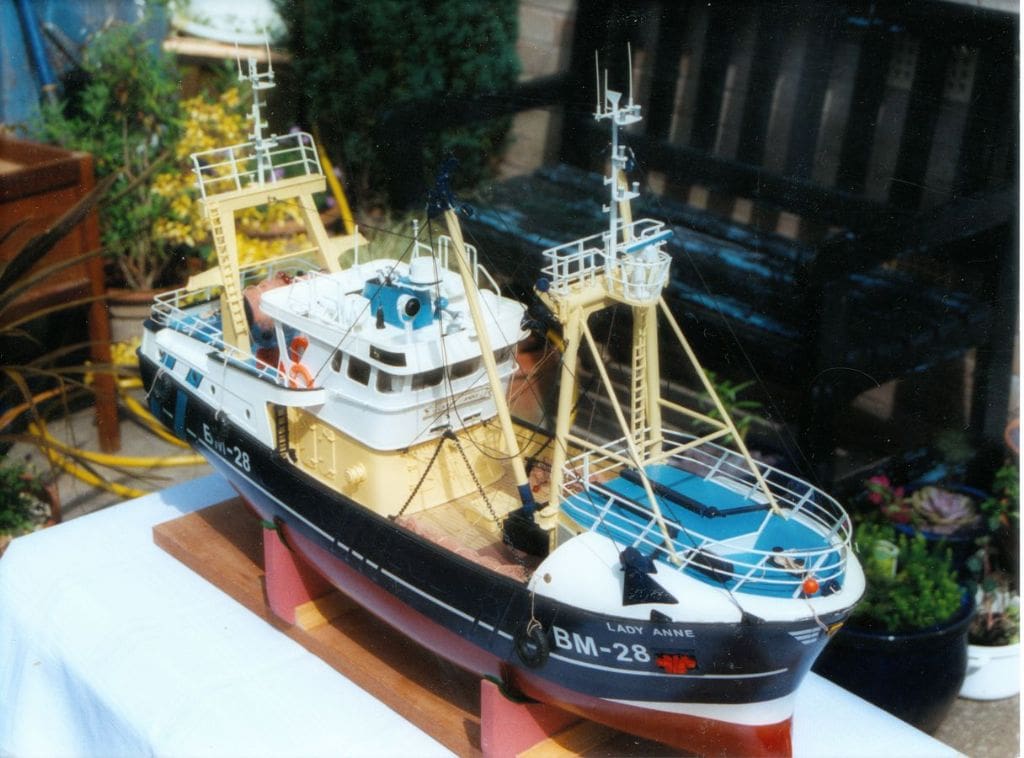
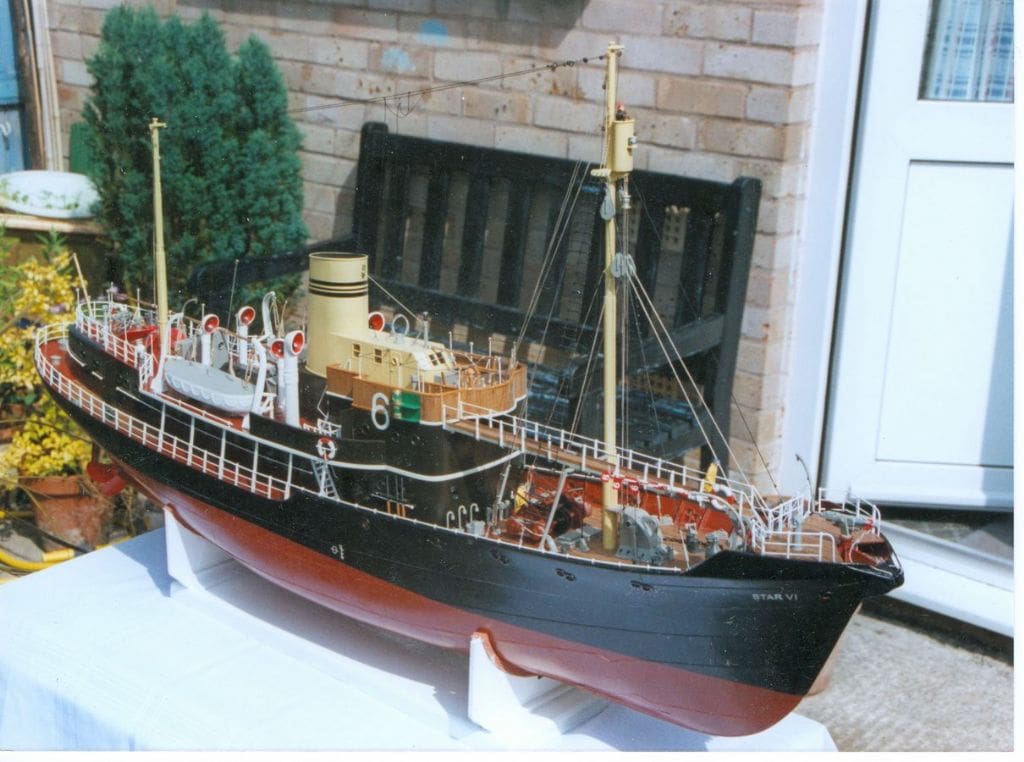
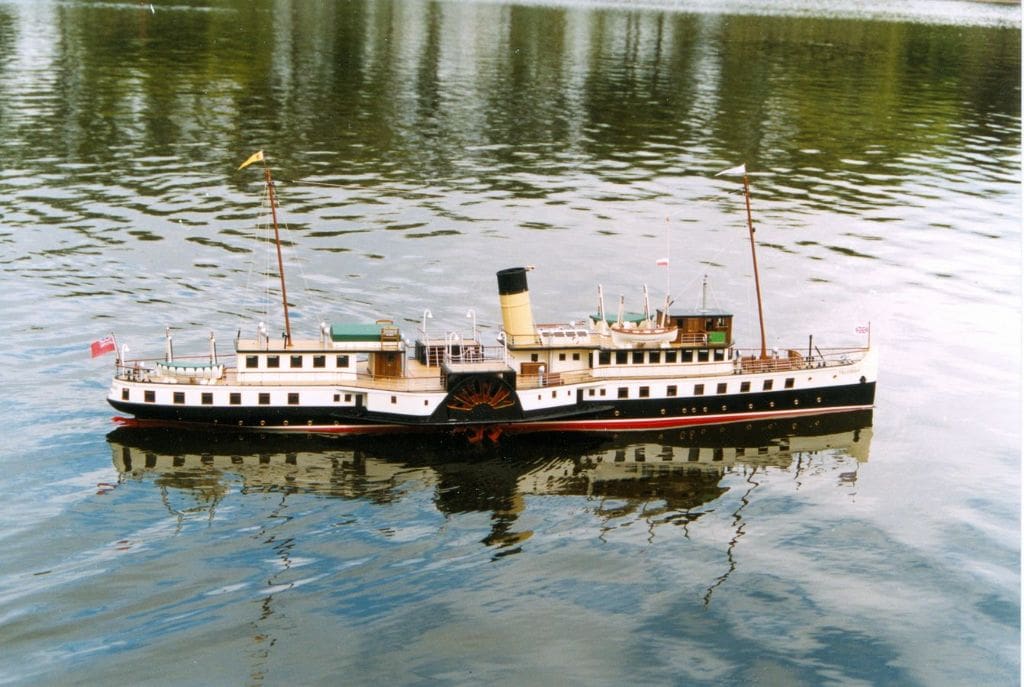
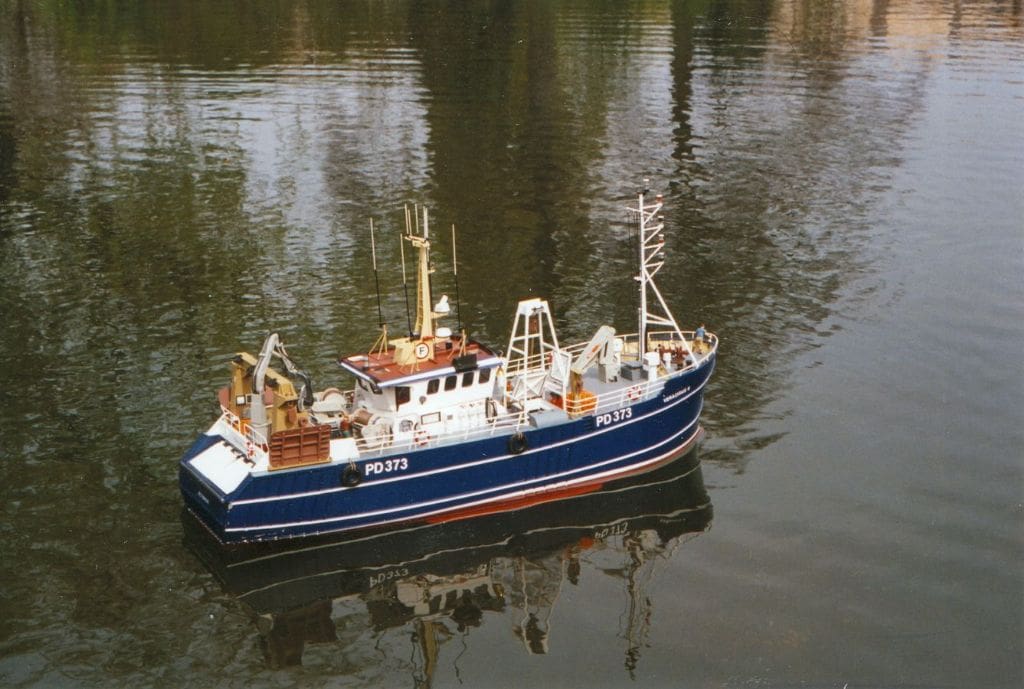
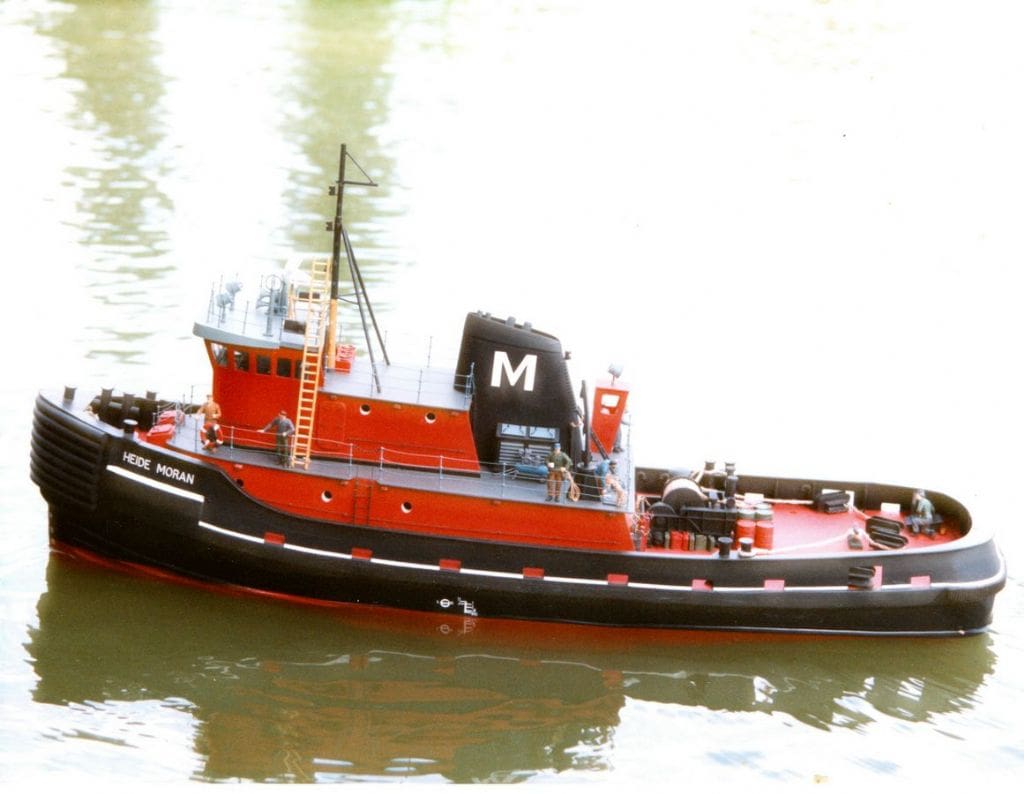
The plans
Drawing ship and boat plans for Model Boats has been one of Jim’s more pleasurable pastimes for the past forty years, even more so when he is in receipt of photos of models built to his plans. These have come from as far as the USA, Europe, the Antipodes Islands and Chile, as well as the UK to name but a few countries. It is a real pleasure to receive pictures of such models, perfect or otherwise (not all modellers have the same level of skill!), but the creation of the model has always given the builder a great deal of pleasure.
By his reckoning, Jim has drawn approximately 46 plans to date for MB, and in fact the first plan he drew for any model boating publication was for Model Boats. This was the Admiralty Auxiliary Fleet Tender Brodick which appeared in Model Boats, October 1968 and the association continues to this day. Vic Smeed was Editor in 1968 and there have been only two since then, so that’s also a good record of continuity.
The early drawings
Living in Greenock on the South Bank of the Clyde at that time, Brodick was perhaps a natural choice as the first plan, because this vessel was frequently sighted passing up and down the river. The plans were developed from a very basic small general arrangement drawing in a marine technical journal. He received some years ago a photograph of a model of Brodick which he thinks was from a model maker in the USA.
Jim still has that particular issue of MB, a survivor of many moves both in the UK and abroad, and looking back over that plan and some of his early efforts, he confesses that they were comparatively basic compared to the more comprehensive and detailed content of his current efforts. This has been mirrored by the increasingly high standard of models achieved by the model makers of today
He believes that his next plan was the stern trawler Universal Star worked up from a small drawing in a shipping magazine and featured in the November 1970 issue, but possibly the Ceylonese tug Nandhimitra came in between. It was a long time ago and memories fade! Anyway, this stern trawler set the tone for many succeeding contributions.
Preparation
Normal practice is to establish a suitable scale to give a reasonable sized model and conform to the usual format of the magazine. Free Plans have to fit into eight (2 x 4) normal magazine pages, whereas feature plans can be any size. It is then a case of scaling up to obtain the dimensions by means of proportional dividers, or more recently by enlargement on a computer scanner. Whilst the latter procedure never gives a finished size of plan without much cutting and patching, a larger print is better scaled up by dividers.
Fortunately, Jim has an excellent local print business with comprehensive facilities for all copying, enlarging and printing requirements at a reasonable cost. With these procedures of copying and scaling he has to be careful to watch for any slight discrepancy in comparison from the stated scale and actual size of the prototype. Some adjustments are often necessary to ensure that the model and full size dimensions are in harmony.
Living in a flat at the time, his first plans were drawn lying flat on the floor, and later an A0 drawing board was obtained which could be laid on a table, but even that was hardly big enough to accommodate the larger drawings without much folding and rolling. After a move to Aberdeen in the mid 1970s, a spare room afforded the space for Jim to draw plans to any reasonable size.
Later during a work sojourn abroad in Holland, a much larger suspended board with adjustable draughting machine was employed and on return back to the UK a proper AO adjustable drawing board was installed as the house afforded the space.
As noted earlier, the basic overall dimensions of the plan are established to suit format and scale etc., and the remainder of the plan is then drawn. If lines are not available then they are generated using the usual practice of constructing waterlines, buttock lines and body plan, it always being advisable to include a diagonal which passes through the body plan more or less at the turn of the bilge and then widths from intersecting point on the centre line of the body plan plotted on the plan view. It is perhaps surprising how some anomalies can be highlighted in this projection which are not initially evident on the other views. These can produce humps or hollows on a model.
It should be appreciated that at the scales of the model plans produced, the thickness of a pencil lead can cause an error when copying shapes from a plan. Jim advises that for example, a flexible batten be laid along the frames at several points to ensure a fair curve is achieved before planking. This will show that some shaving off, or build up, may be required.
The majority of Jim’s model plans have been generated from similar originals, but in some instances it has been possible to obtain builder’s original drawings to use as basis. In many cases requests for drawings, photos or information has been met with interest and co-operation. However, with the drastic reduction of the British shipbuilding and marine engineering industry this source of supply has disappeared and except for the collection of plans in museums and other public bodies, no ready access to original drawings exists.
Fortunately, Jim’s experiences of a lifetime associated with shipbuilding, boats and ships of all sizes plus experience of the marine industry in general, has provided him with sufficient knowledge to generate lines drawings and other details not shown on the very basic drawings from which some of his plans originate.
Jim, and indeed all of us, should be indebted to the staff at the public establishments and some private individuals, who give up their time to maintain a repository of plans and drawings. Regrettably, some collections at a few of our national museums are apparently regarded as something to be kept under lock and key and copies only released at an exorbitant cost after much signing of disclaimers. In the forty years or so that Jim has been contributing plans to MB (he is now 74), he has not had any complaints as to a major inaccuracy, so either he has got it right or the model maker has overcome any anomalies without comment!
(I am grateful to Jim (and Glynn Guest) for their current regular Free Plan contributions to this magazine. Yes, maybe they are not everyone’s cup of tea, but on the various forums and at shows, models regularly appear built from these plans, so they are clearly valued. I am fortunate that MB can continue the bi-monthly free plans for the foreseeable future. Recently, John Parker from Australia and Alex Thomson from Whitley Bay have been contributing occasional feature plans for MB, and these have also been very well received – Editor)


